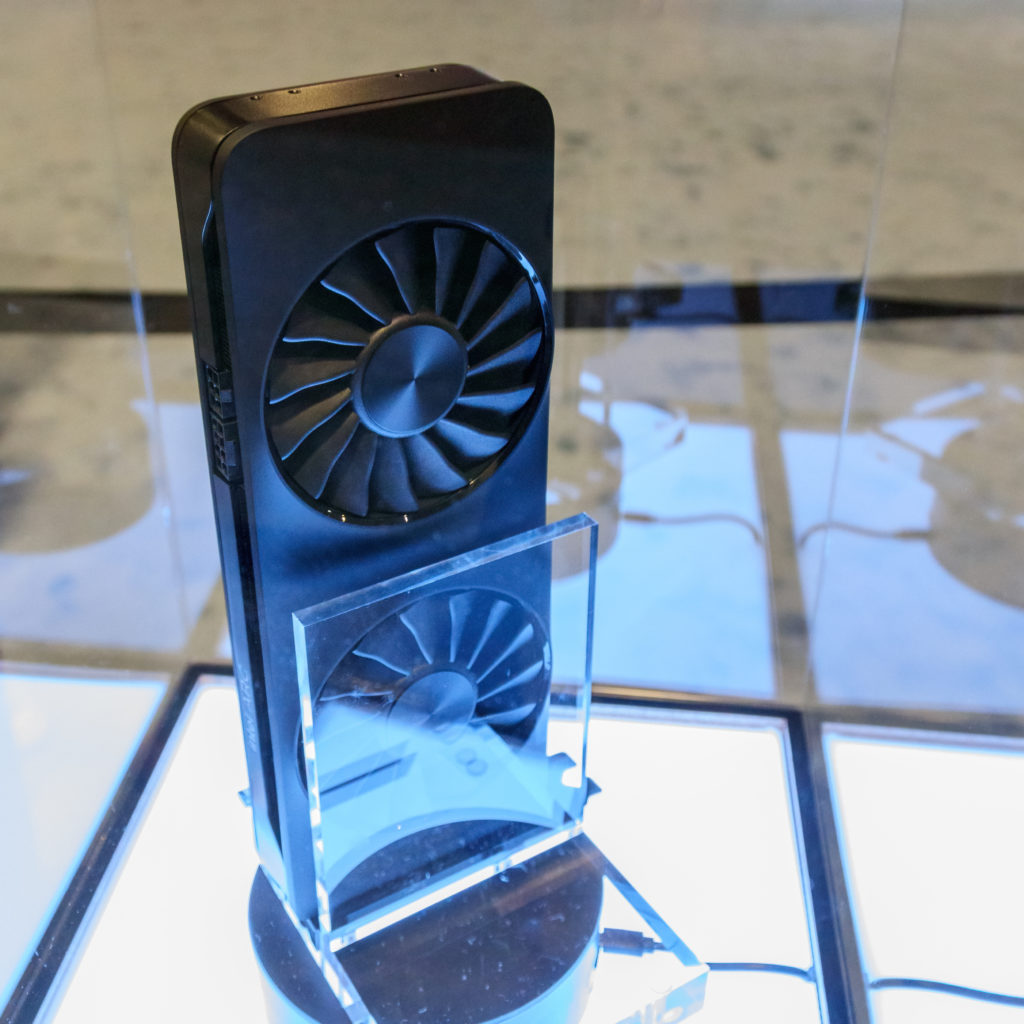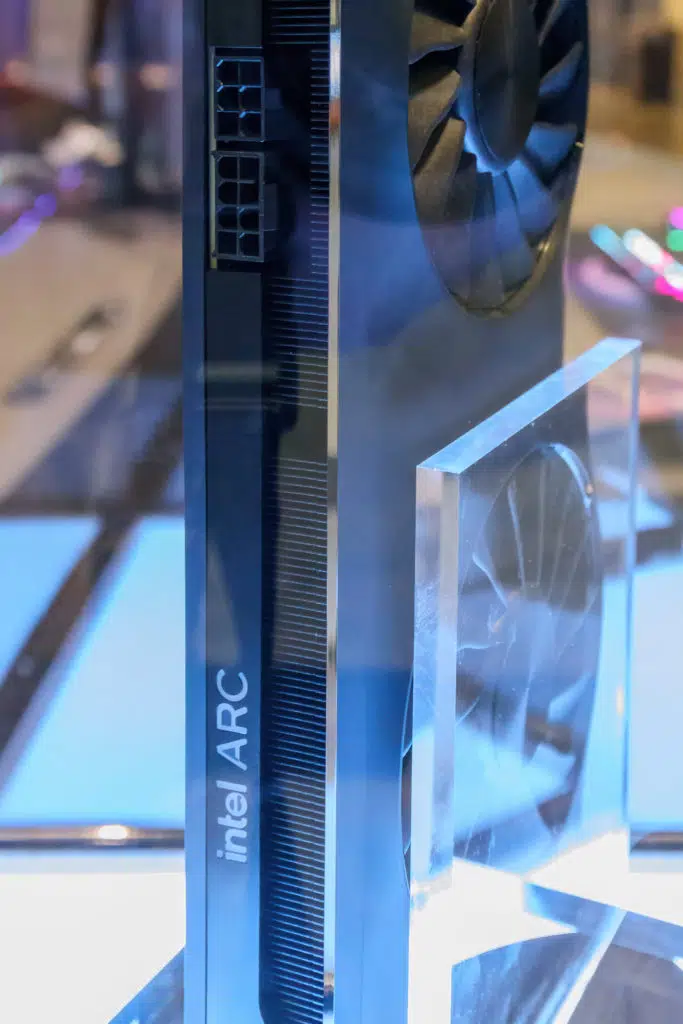At DreamHack 2022 in Dallas this weekend, Intel brought a display sample from its discrete ARC GPU lineup to show off for the first time and spent some time talking about the software features that they will roll out with it.
Intel wouldn’t talk much about the card (Ed: I hope you at least asked some questions!), which is not releasing until sometime later this summer at the earliest. However, we can provide some speculation as well as where Intel is planning to go with its discrete graphics line.
Intel ARC Hardware First Look
For the GPU hardware itself, Intel is going with the ARC branding, in all caps, as evident in the label silk-screened onto the GPU backplate shown below, which does look to be metal and perhaps machined aluminum. This is in line with most premium GPUs and has a classy look to it on first inspection. Do note that the GPU was in a plexiglass box that looked great in person but was a mess of reflections for photographing.
Intel is also aiming for a modern featureset in comparison to its competitors, though it did stress one hardware advantage: the ability to encode AV1. Current discrete GPUs are limited in terms of the most modern video encoding capability, and AV1 is poised to be a panacea to the intense licensing requirements that standards like MPEG tend to burden their codecs with, as it is a true FOSS alternative.
The “Limited Edition” text perhaps indicates that Intel may be relying on board partners for broader distribution while still providing a retail reference design, similar to how NVIDIA releases its Founders Edition line. We’ll have to wait and see just how limited—or not—these Limited Edition ARC GPUs are in the wild.
For cooling, Intel is using a pair of axial fans for the ARC display model. The cooler itself is no more than a centimeter taller than the expansion slot bracket, judging by sight, so the fans are likely in the 92 mm range. This is about the level cooling we’d expect for a mid-range RTX 3060 to RTX 3070 or RX 6600 to RX 6700 GPU, and it gives us an idea of the heat load, and thus power draw, that Intel is planning for.


Moving to the top of the card, we can get a more definitive answer on maximum power draw. With an eight-pin PCIe connector supporting up to 150 W, a six-pin connector supporting up to 75 W, and the PCIe slot supporting up to 75 W, we’re looking at a maximum power draw of 300 W, per PCIe spec. And Intel will likely be sticking to that spec, so as to not run afoul of the issues that AMD and NVIDIA have had with power draw spikes overloading PSU rails (NVIDIA, most recently) and drawing too much power through the PCIe slot (AMD, not as recently).
Now, along with the speculation, we’ll point out that Intel will also not likely want to be maxing out either of the power leads nor the PCIe slot power plane, especially given that it’s targeting OEMs first and OEMs tend to not over-spec their power supplies. Or anything else, for that matter.
Therefore, we’d put this discrete Intel ARC GPU in the 225 W to 250 W TBP range. Not exactly high-end when compared to the RTX 3090 and RX 6900 XT, which can sport three or more eight-pin PCIe power leads and easily draw over 400 W, but still plenty respectable for a GPU that Intel needs to be accessible to the masses and likely to be very effective at the most popular competitive games, which is where Intel is targeting first with its discrete ARC product line entries.
Intel ARC Control
Also worth mentioning, and rather hyped by Intel, is the Intel ARC Control software package developed to support its ARC GPUs. Intel appears to be aiming directly for NVIDIA’s GeForce Experience software here and is providing a host of features including hotkeys and customizable overlays for performance metrics, as well as features for streamers or anyone that needs more from their webcam than typical video conferencing software can provide.
Intel also harped on two big points with ARC Control. The first is that, unlike NVIDIA with GeForce Experience, an account is not required to use ARC. Gamers and content creators have complained vocally about this requirement, and, well, Intel has listened.
The second major point is that ARC is meant to be extremely responsive. Most control suites provided by hardware manufacturers tend more toward expansive bloatware with laggy interfaces, and it appears that this is another trend that Intel would like to avoid for the moment.
Final Points
Wrapping it up, an engineer from Intel by the name of Cody was running various games off of a Dragon Canyon NUC equipped with an Intel Core i9-12900, which is modular and can accept discrete GPUs up to 12 inches in length. The GPU being used for the demo was stated to be an ARC A7, which is currently set to be the top-end SKU for Intel’s mobile ARC line. And as convention goers were not permitted to actually play games on the Intel Dragon Canyon NUC with the ARC A7, Cody was kind enough to boot up a game and play a bit for us as a demonstration.




